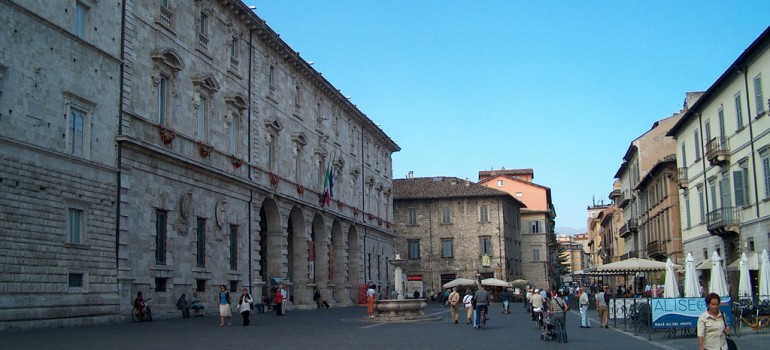
Ascoli Piceno is located on a rocky spur at the confluence of the rivers Tronto and Castellano. Based on the findings of neo-Eneolithic, it can be said that since that time Ascoli was the site of a settlement, front, then, immigration of the Sabines. The latter, in fact, according to an ancient tradition, came in the Piceno, between the seventh and sixth centuries BC led by a woodpecker (the bird sacred to Mars) and it would be integrated with the native population, giving rise to the Piceni, who made Ascoli their reference center. The city in 286 BC was conquered by the Romans, called Asculum. In 91 BC was in this city that began the revolt against Rome, with the killing of judges. The siege was laid to the city by Roman troops, was enough to bring down the defenses after a few months, with its destruction of the city. In 578 it was conquered by the Lombards and assigned to the Duchy of Spoleto, and then move to the Church in 774. It became a free commune in 1185, while in the second half of the thirteenth century. Frederick II expanded its influence, while not denying important privileges. In the Middle Ages there is in addition to an increase in population, and a strong building of the territory, however, that respected the existing urban structures Roman. Increasingly this period are about two hundred towers that were built in the city, of which today we can still admire some erected towards the sky, showing all their possenza.Successivamente, his story became those of the Roman Empire. The same force, the same energy that shines through its symbolic stone, the travertine that, with its charming colors, makes enchanted the vestiges of a great past. Roman remains, gradually to the Romanesque, Gothic, and other works of art that made of Ascoli the city of hundred towers, never-ending surprises, especially in the famous Piazza del Popolo. Embellished on three sides by the gallery with 59 arches and the mole with crenellated tower of the Palace of the Captains, embodies the city’s history. History recounts that in the halls of the Art Gallery and the Diocesan Museum, rich in works of art, from the cope of Nicholas IV of the XIII century, the works of Carlo Crivelli, Pietro Alemanno, Cola D’Amatrice, Titian Reni, Luca Giordano, G.Ghezzi, Pietro Vannini, A. De Magistris.